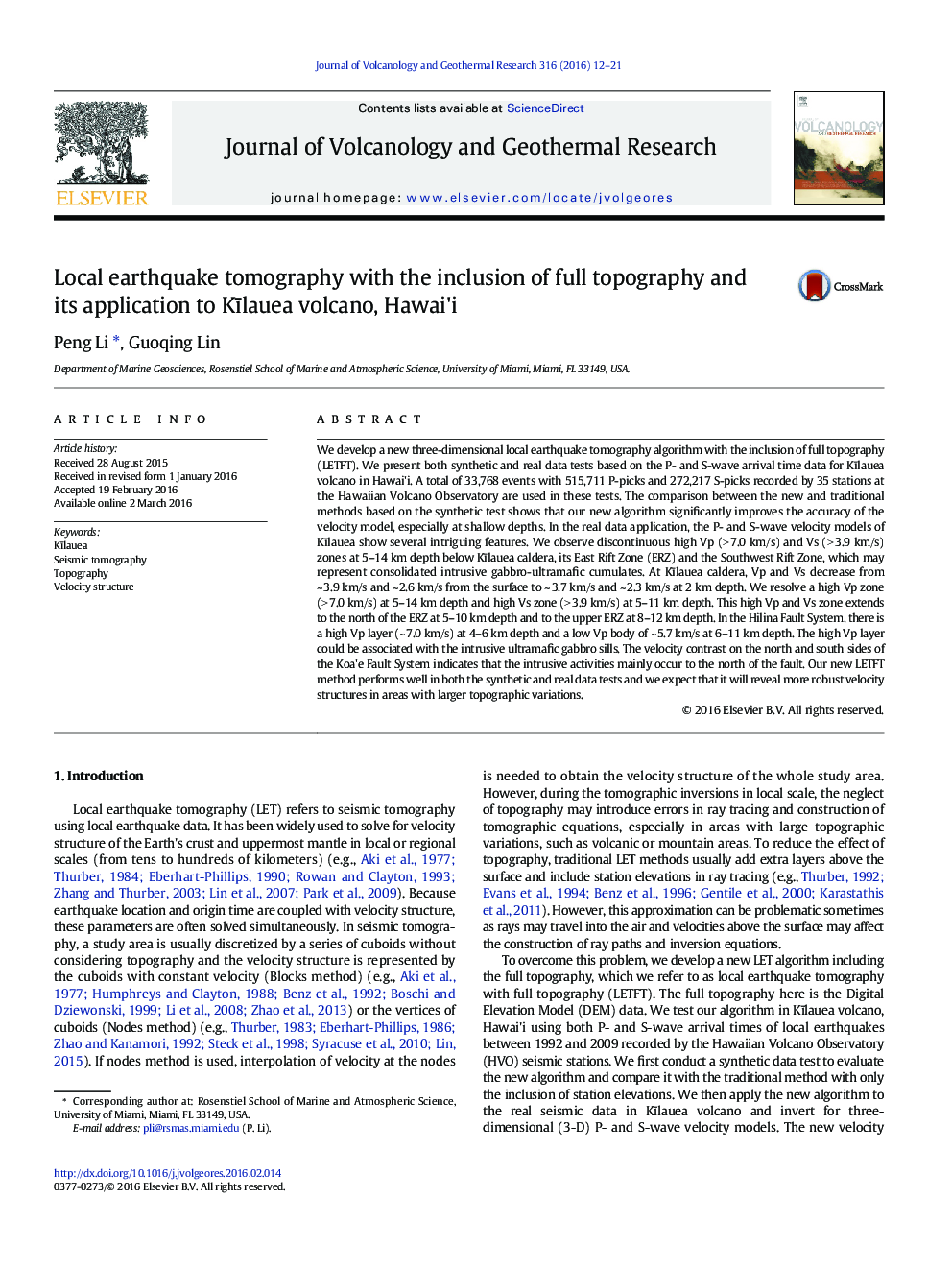| کد مقاله | کد نشریه | سال انتشار | مقاله انگلیسی | نسخه تمام متن |
|---|---|---|---|---|
| 6439730 | 1638306 | 2016 | 10 صفحه PDF | دانلود رایگان |
عنوان انگلیسی مقاله ISI
Local earthquake tomography with the inclusion of full topography and its application to KÄ«lauea volcano, Hawai'i
دانلود مقاله + سفارش ترجمه
دانلود مقاله ISI انگلیسی
رایگان برای ایرانیان
کلمات کلیدی
موضوعات مرتبط
مهندسی و علوم پایه
علوم زمین و سیارات
ژئوشیمی و پترولوژی
پیش نمایش صفحه اول مقاله

چکیده انگلیسی
We develop a new three-dimensional local earthquake tomography algorithm with the inclusion of full topography (LETFT). We present both synthetic and real data tests based on the P- and S-wave arrival time data for KÄ«lauea volcano in Hawai'i. A total of 33,768 events with 515,711 P-picks and 272,217 S-picks recorded by 35 stations at the Hawaiian Volcano Observatory are used in these tests. The comparison between the new and traditional methods based on the synthetic test shows that our new algorithm significantly improves the accuracy of the velocity model, especially at shallow depths. In the real data application, the P- and S-wave velocity models of KÄ«lauea show several intriguing features. We observe discontinuous high Vp (>Â 7.0Â km/s) and Vs (>Â 3.9Â km/s) zones at 5-14Â km depth below KÄ«lauea caldera, its East Rift Zone (ERZ) and the Southwest Rift Zone, which may represent consolidated intrusive gabbro-ultramafic cumulates. At KÄ«lauea caldera, Vp and Vs decrease from ~Â 3.9Â km/s and ~Â 2.6Â km/s from the surface to ~Â 3.7Â km/s and ~Â 2.3Â km/s at 2Â km depth. We resolve a high Vp zone (>Â 7.0Â km/s) at 5-14Â km depth and high Vs zone (>Â 3.9Â km/s) at 5-11Â km depth. This high Vp and Vs zone extends to the north of the ERZ at 5-10Â km depth and to the upper ERZ at 8-12Â km depth. In the Hilina Fault System, there is a high Vp layer (~Â 7.0Â km/s) at 4-6Â km depth and a low Vp body of ~Â 5.7Â km/s at 6-11Â km depth. The high Vp layer could be associated with the intrusive ultramafic gabbro sills. The velocity contrast on the north and south sides of the Koa'e Fault System indicates that the intrusive activities mainly occur to the north of the fault. Our new LETFT method performs well in both the synthetic and real data tests and we expect that it will reveal more robust velocity structures in areas with larger topographic variations.
ناشر
Database: Elsevier - ScienceDirect (ساینس دایرکت)
Journal: Journal of Volcanology and Geothermal Research - Volume 316, 15 April 2016, Pages 12-21
Journal: Journal of Volcanology and Geothermal Research - Volume 316, 15 April 2016, Pages 12-21
نویسندگان
Peng Li, Guoqing Lin,